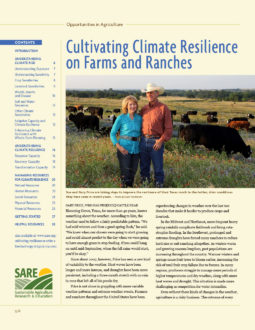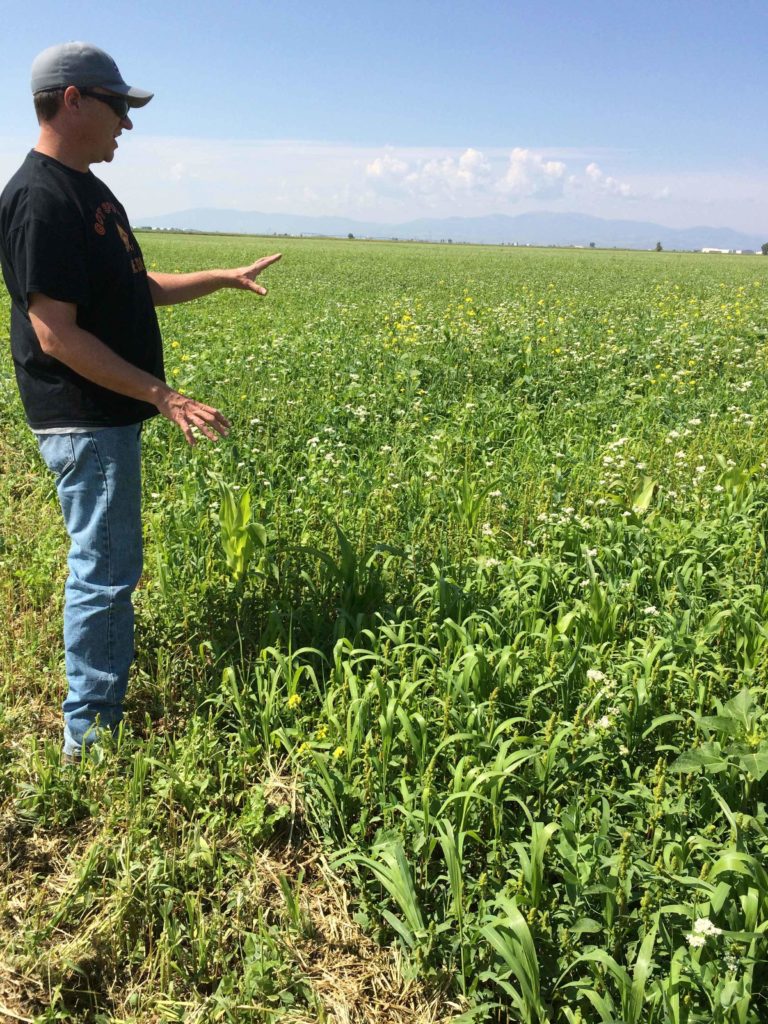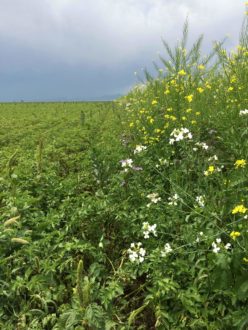Cover crops are planted to provide many important benefits, such as supplying crop nutrients; suppressing weeds, insects or diseases; building soil health; protecting soil nutrients from loss; providing forages; and improving farm income. Sustainable farmers are increasingly turning to extremely diverse cover crop mixtures, or “cocktails,” made up of eight or more cover crop species in an effort to restore soil health and achieve a wider range of benefits.
The specific mix of species varies with farming system, planting season and objectives, but the overall aim is to address specific resource needs while maximizing the capacity of the cover crop as a whole to flourish no matter the weather or soil conditions. High species diversity is the key to success, so cocktails typically include a mix of warm- and cool-season grasses, broadleaf species and legumes.
Colorado potato grower Brendon Rockey appreciates the soil health, fertility, pest management and additional income produced by cover crop cocktails. He has fine-tuned a diverse mix of plant species that he adds to his farming system in various ways: planted as a green manure rotation, in insectary strips and intercropped with his cash crop of potatoes.
Cover crop cocktails have allowed Rockey to reduce his water use by about 14 inches, and they have greatly improved both soil health and his bottom line. He now uses a two-year rotation of potatoes and a mixed-species cover crop because adding green manure is more profitable than growing a cash crop every year. “Bringing in a diverse cover crop improved our soil health so much that it had a huge impact on the productivity of our potato crop,” he said.
The green manure mix has a variety of cool- and warm-season broadleaf and grass species, including buckwheat, sudangrass, purple top turnips, daikon radishes, oats, lentils, winter peas, pearl millet, Ethiopian cabbages and safflower. Parasitic nematode control is aided by sudangrass, while lentils and peas are nitrogen fixers. Radishes, turnips and oats are nitrogen scavengers, provide deep tillage and suppress weeds. Custom grazing this cocktail brings in some additional income as well as other unique benefits associated with the integration of livestock into his crop production system.
To reduce pest pressure in his potato crop, Rockey plants a mix of flowering species in strips. The mix is designed to create the diverse architecture and long flowering times needed to support high populations of beneficial insects throughout the growing season. It includes oats, radishes, phacelia, several species of mustard, hairy vetch, lentils, sunflowers, a mix of clovers, buckwheat, fava beans, cosmos, cornflowers, marigolds, calendulas, four o’clocks, coreopsis, forget-me-nots, California poppies, baby’s breath, balsam impatiens and sweet alyssum.
Rockey also uses another mix of cover crop species—field peas, chickling vetch, desi chickpeas, buckwheat and fava beans—that he intercrops with his potatoes. He began developing this companion cocktail after he saw a yield boost in a test plot of potatoes that included a companion crop of field peas.
For an extensive collection of cover crop resources, visit sare.org/cover-crops. Many resources exist to help you select the right cover crop species, including SARE’s book Managing Cover Crops Profitably, the USDA Agricultural Research Service’s Cover Crop Chart and the Midwest Cover Crops Council’s selection tool.


